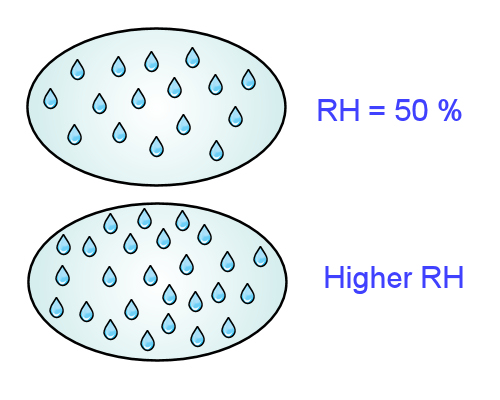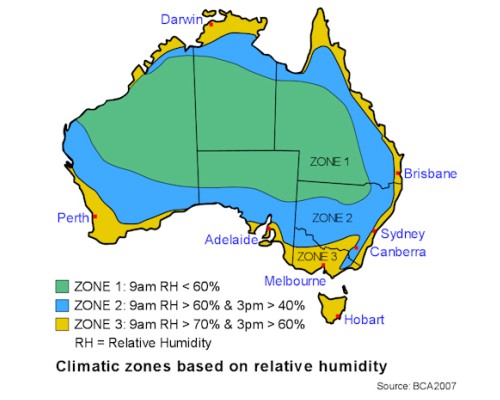Relative humidity and moisture
 Audio for slide 3 (mp3 |6|KB)
Audio for slide 3 (mp3 |6|KB)
Relative humidity
The amount of moisture - or water vapour - suspended in the air is called relative humidity, often abbreviated to RH.
It is expressed as a percentage and is 'relative' to the maximum amount of water vapour that the air can absorb at that temperature.
For example, if the RH is 50%, it means that the air is holding half of the total amount possible at that temperature.
As the RH approaches 100%, the closer it gets to being fully saturated.
Once it reaches saturation point, any additional moisture will result in condensation, or 'dew'.

 Audio for slide 4 (mp3 |6|KB)
Audio for slide 4 (mp3 |6|KB)
This graph shows the amount of water that the air can carry between -20° C and 50° C.
You can see that at 50% RH (shown by the green line), every kilogram of air will contain nearly 50 grams of water when the temperature is at 50°, but once the temperature drops below zero, there is hardly any moisture at all.

 Audio for slide 5 (mp3 |6|KB)
Audio for slide 5 (mp3 |6|KB)
Because Australia is such a big continent, it too has big variations in average levels.
This map shows the average annual RH readings around the country at various times of the day. It's based on a map from the Building Code of Australia.
You can see a more detailed version of this map on the Australian Bureau of Meteorology (BOM) website.

Learning activity
 Audio for slide 6 (mp3 |6|KB)
Audio for slide 6 (mp3 |6|KB) Let's take a closer look at the climatic zones around Australia. Click on the map at right to see it in a larger window.
The map uses mathematical signals to express 'more than' and 'less than'. For example:
'< 60%' means less than 60%
'> 60%' means more than 60 %.
See if you can find where your own town or city is located on the map. What climatic zone does it fall into? What is the average RH at 9 am?
If you live in a regional area and you're having trouble deciding which band it falls into, have a look at the BOM map. It shows many more towns and has more detailed zone bands.







